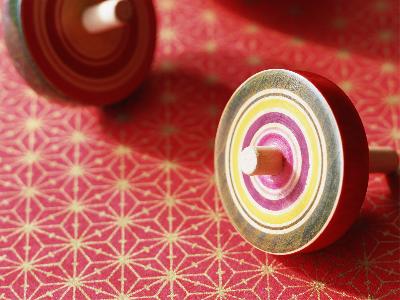玩具 Omocha Omocha (toys)
|
A Japanese word “omocha” meaning a toy originally means a thing to hold in a hand and play with. In the Heian period (794-1192), it was called “mote (or mochi)-asobimono (mote or mochi means to hold in a hand, and asobimono means something to play with),” or it was referred to as simply “asobimono” in the Tale of Genji. In the Edo period, the word “omochi-asobi” or “te-asobi (hand play)” came to be used. Although some of the figures or masks made of clay dug out of Jomon excavation sites are considered as toys, most of the Japanese toys were originally introduced from China. Take koma (a top) for example, this toy is called koma in Japanese because it was introduced into Japan in the Nara period (701-794) via Goguryeo (called Koma in Japanese). Mari (a Japanese ball) was directly introduced from China during the Tang Dynasty and later it developed into “temari” for girls. After coming from China or Korea, these toys were improved and developed into something unique to each locality. Each of the traditional toys still found in various places in the country has been deep rooted in the people’s lives and religious ceremonies.
- name
- Omocha (toys)













